10 Services to Start Your Own Affiliate Marketing Program

Affiliate marketing is a double-sided coin, as all coins tend to be. On this site, we tend to talk most about the publisher side of things. When you’re the one running the links and making the money, and when you’re the one with concerns about getting paid. We have articles like these:
- What Can You Do if Your Affiliate Doesn’t Pay You?
- Which Web Hosting Affiliate Program Pays the Most?
- How to Promote an Affiliate Link Without a Website
As you can see, they tend to be focused on the publisher. There’s another side to the story, though, and that’s the advertiser. The person on the other end, running the affiliate program. In many cases that’s just Amazon, but the fact is, anyone can start up their own affiliate program. Thousands upon thousands of businesses have their own affiliate or referral plans. You can too.
Understanding Affiliate Marketing
Affiliate marketing functionally works like just about any other kind of paid marketing, with one major difference. The major difference is simply that you don’t create or control the creative of the advertising being run. You aren’t making ads and submitting them to publishers or to ad networks. Instead, you’re letting your publisher network create the ads they find most effective.
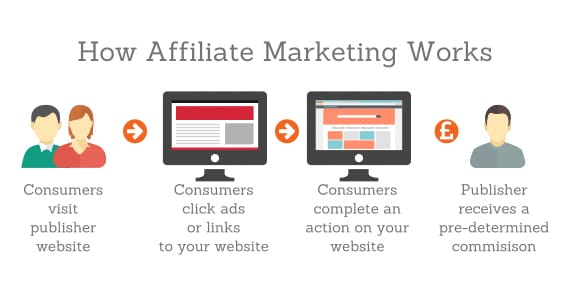
Oh, it’s not a no-holds-barred affair. You can implement some restrictions or directives. Many affiliates don’t allow the use of their trademarked logos, and restrict the sources of their traffic. You might not want to allow people to buy PPC advertising to promote your affiliate link, because you might also be buying PPC traffic and bidding against them. Even then, you get to set your own rules.
The point of affiliate marketing is the massive return on investment. It doesn’t take much to pay out to anyone who refers traffic that converts. You don’t have to pay for views or traffic that doesn’t buy, though you can. All you really need to worry about is tracking it all, and that’s why there are systems you can implement wholesale.
It’s not free money, though. There are costs.
First of all, you have to manage the affiliate program yourself. That means monitoring traffic, making sure the automated scripts are working properly, patching software as necessary, designing policies and optimizing the program, making sure it’s enticing to potential affiliates, and all the rest.
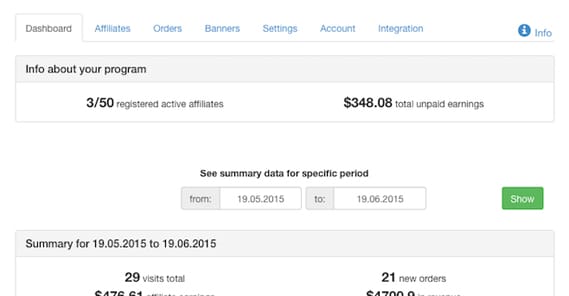
This is a full time job, no two ways about it. Hiring someone to do this for you can range from a few thousand bucks to an annual salary on par with most other entry-level workers. You can do a lot of it yourself if you want, but you’re sacrificing your time to save money. Is it worth it? That depends on how crucial you are to growing your business.
You also have to consider the cost of the affiliate platform you’re using. Sure, you can try to develop a custom solution for yourself, but if it’s anything more complex than a basic referral system, it’s going to be pretty difficult and likely cost a lot in development as well.
Working with an affiliate network is one option, though you will need to pay a commission to the network. By contrast, buying specialized software will cost more up front, with the benefit being no commission for the software creators.
There’s also the cost of the various creative design that goes into running a successful affiliate network. If you’re using a software platform, you need to brand it and make it your own, with all the design of pushing a product where the “product” is selling your other products.

Many businesses that run affiliate networks also provide some consistent branding and assets for their affiliates. The more tried-and-tested content you give them, the more likely they are to succeed and bring sales back to you. This can be a large up-front cost, and you often need to keep your asset library up to date.
In short, there are a lot of costs associated with setting up an affiliate network of your own. You can go ahead and use a third party network, like ShareASale or Clickbank, if you want. I won’t judge you. I’m simply focusing this post on using a software solution and developing your own program.
Deciding on Details
Running an affiliate network is all about the details. First of all, you have to decide between PPS and PPL. A PPS model is the traditional pay per sale model. You only pay out when a user makes a sale and you can see they were referred by an affiliate. It’s the easiest, the most common, and guaranteed to be lucrative unless you’re somehow paying out more than the minimum cart a user could make.
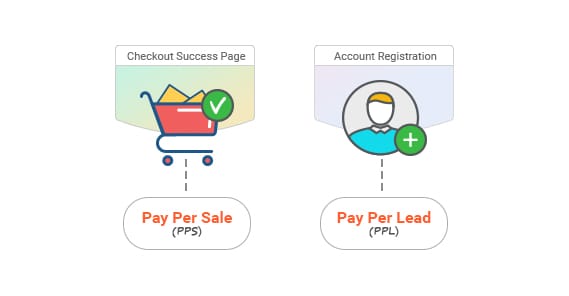
PPL meanwhile is pay per lead, and is typically used for high profile products where a deal is closed by a salesman rather than by a webpage. You see this kind of model with people selling private jets and custom artwork, rather than iPhone cases and bumper stickers. That, or industries where you’re almost guaranteed a sale, so leads tend to equate to sales. PPL is often cheaper on an individual instance basis, but a lot of failed leads can lead to exceptional costs.
The question also then becomes; where does the money come from? You can take the money out of your current profits, or you can increase your prices a bit to compensate for your commissions. The benefit of the second method is that a dollar or two here and there doesn’t make or break a sale, and that you make that additional money on non-affiliate sales as well.
For newcomers to the affiliate space, I recommend a small price hike while using a pay per sale model. Pay per lead requires more detail and modifications to your plan while in action, and it’s hard to know if you’re making the right decisions. As for choosing exactly how much you should pay as your commission, you can look for average payouts for your competitors, or you can calculate it yourself.
- Calculate, based on income, expenses, profit, growth, and all your other cost metrics, exactly how much of a commission you can afford.
- Analyze your competitors and see if they have affiliate programs, and if so, are your calculated rates competitive?
- Cut down on the commission to leave room to increase it for performance bonuses, private offers, and other benefits to affiliates who perform well.
With that, you can calculate a good commission and make sure you’re still competitive in your niche.
Everything else, recruiting people, gaining super-affiliates, advertising your affiliate program, I’m leaving to you. For now, we’re still at the beginning, and you still don’t have a system. Well, read on, friends; here are 10 platforms you can use to make your own affiliate program.
1. Cake
Cake produces three different offerings for different levels of need. Journey is a cloud platform that tracks data about your customers and helps keep them coming back.
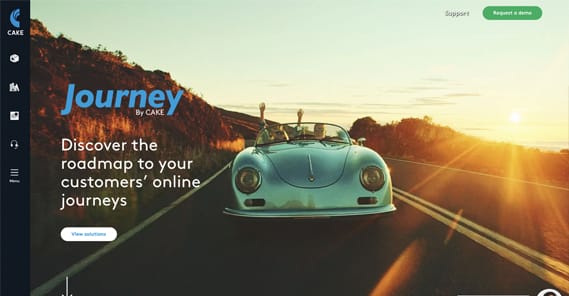
Cake itself is an affiliate tracking platform to manage your affiliate networking needs, with fraud prevention, role portals, and multiple payout options. Then Cake for Lead Distribution is a much more extensive client management platform that is probably overkill for most of us. Pricing for the platform will depend on your needs; you need to talk to their sales team for that information.
2. HasOffers
HasOffers, from Tune, is a fairly robust affiliate marketing solution. Their primary offering is the real time data analysis they perform to make sure your data is as accurate as possible.

They’re very good with tracking leads, and can spot fraud in a majority of cases, so you don’t have to worry about paying out when you shouldn’t. The Professional version is $280 per month and limits you to 300K clicks per month and a maximum of 100 offers. To remove those limits, it costs you $800 per month. No one said running an affiliate program was cheap. At least they have a 30-day trial.
3. Affiliate Pro
One of the most flexible systems available for affiliate marketing, Affiliate Pro has a ton of options you can use. You have different levels of commission options, including second-tier commissions and commissions based on percentage of first sale only.

There’s a ton of reporting, both for yourself and for your affiliates. You can also pay out through PayPal, bank transfers, and a handful of other services. Plus, the whole thing is only $49. The flip side for the low price is that you have to do everything yourself; they can do installation for you, but they require your information, and I’d always be skeptical about emailing that away.
4. 1ShoppingCart
This is not strictly an affiliate program manager. Instead, it’s a shopping cart software solution that includes the ability to run affiliate marketing through it. It comes with store templates, a small transaction fee, upsells for post-transaction hooks, recurring billing, digital downloads, and contact management.
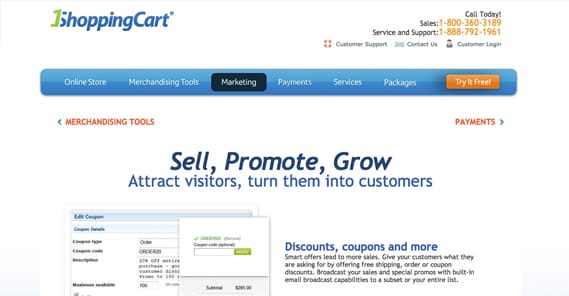
There’s a product limit of 500 for the smallest plan, but the smallest plan doesn’t include affiliate management. For the affiliate features, you need either Premium or Ultimate, which are $119 per month and $249 per month respectively.
5. Post Affiliate Pro
The key to Post Affiliate Pro is flexibility. It has a lot of very simple features that you can take or leave as necessary. You can choose different styles of affiliate link, you can track direct links, you can run private campaigns, you have fraud prevention, you have a handful of different commission types, a ton of promotional material, and a whole lot more.
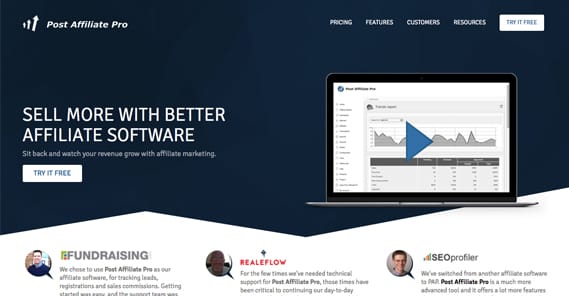
Pricing begins at $97 per month for up to a million tracking requests, unlimited affiliates, and lifetime updates. You get more support, more requests, and support for higher levels of traffic for the higher priced versions.
6. Omnistar
Also known as OSI Affiliate, this program comes with a 15-day free trial. They include smart rewards, automatic signup, customizable thank you pages, a feedback survey, and a whole host of other marketing features.
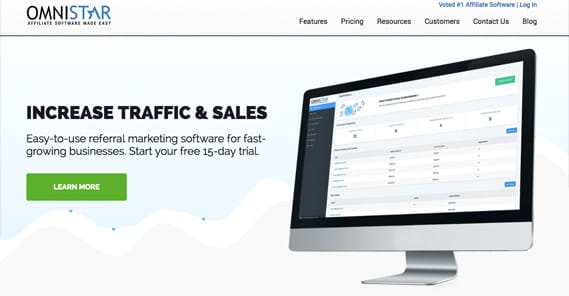
They also integrate with major commerce platforms, like WooCommerce, Shopify, Etsy, and ActiveCampaign. For $47 per month you get up to 20K requests for 200 affiliates. For 500K requests and 1K affiliates it bumps up to $97, and then higher limits are more expensive.
7. iDevAffiliate
While the prevalence of services with a lowercase “i” in front of their name is a rather old trend, that doesn’t mean this 15-year-old platform is any less good at what it does.

They have commission variety, customizable dashboards and systems, a ton of marketing options for affiliates, good security and good reporting. They also integrate with 150+ systems, ranging from Stripe to Shopify. They also have flexible pricing; a monthly cloud-based version runs you $39 per month. The standard edition is a one-time purchase of $199 but doesn’t include plugins; for $299 you get a discount on plugins, and for $399 you get them all. Plugins range from language packs to geotargeting.
8. ClickInc
This is a good option if you want to run an affiliate program but your budget and your needs are both quite low.

They give you a 30-day free trial, and they start you off with a program that gives you unlimited impressions and unlimited affiliates, but only 50K clicks per month. That, though, is a mere $25 per month. It’s not the most robust manager, but it’s great for small businesses.
9. Interneka
With a wide range of features and tools, Interneka gives you a lot of control over your affiliate structure.
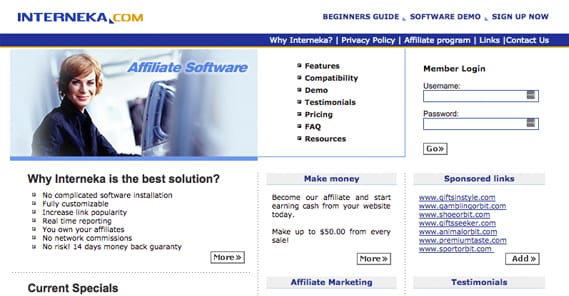
You can set things to run pretty much however you want, with an emphasis on good global commerce. They have built-in multi-currency support and a host of other good global options. For $29 per month with a one-time fee of $75, you get 500 affiliates and 50K hits per month. Triple those numbers and the price rises to $39 and $149. Or you can buy the whole thing for $799 and never worry about a monthly fee.
10. HitPath
HitPath is the single most flexible affiliate manager on this list. They offer a million different features, but unlike other platforms, they don’t foist them all upon you or charge you for them.
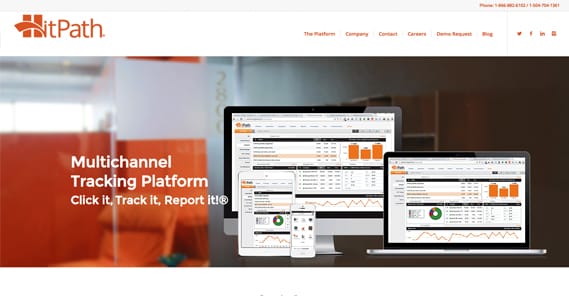
You work with their sales team to figure out what you need, and design a package for your brand specifically. Only then do you price it out and pay for what you use, not what you don’t need.
The post 10 Services to Start Your Own Affiliate Marketing Program appeared first on Growtraffic Blog.